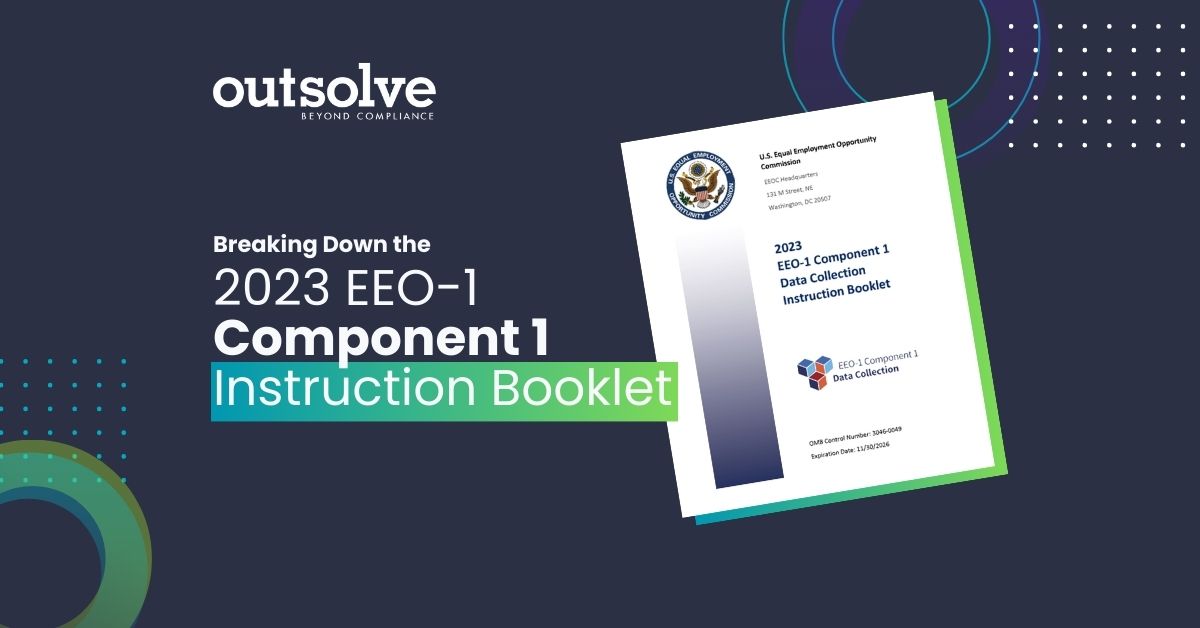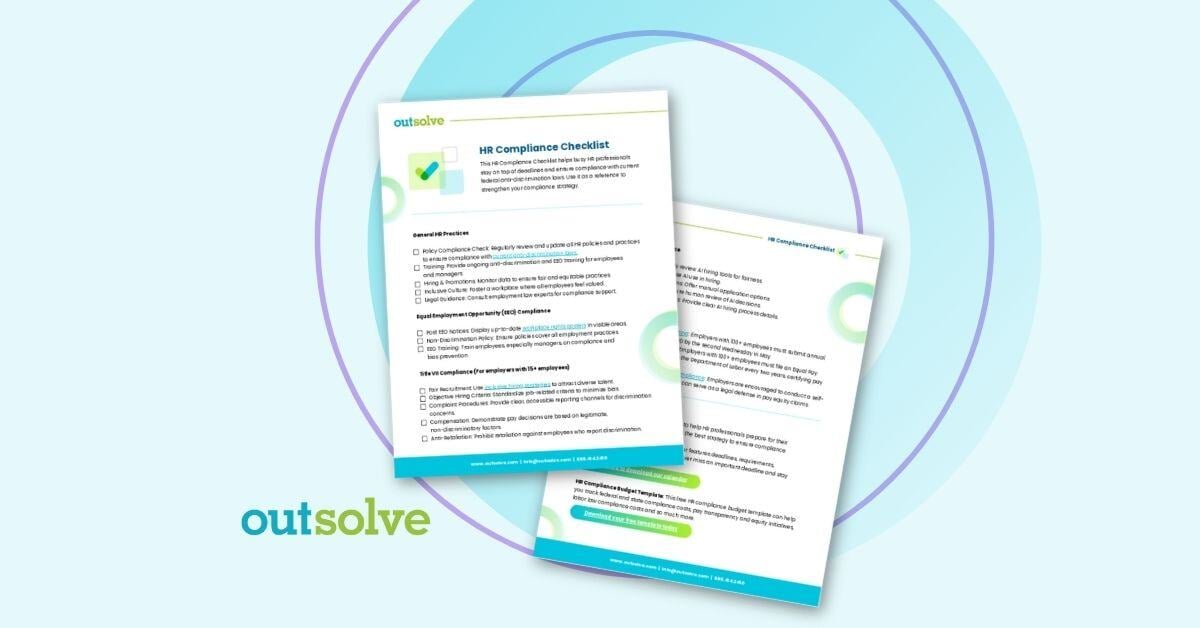2 min read
Breaking Down the 2023 EEO-1 Component 1 Instruction Booklet: Updates and Implications
 Debra Milstein Gardner
:
Apr 23, 2024 10:45:00 AM
Debra Milstein Gardner
:
Apr 23, 2024 10:45:00 AM

The U.S. Equal Employment Opportunity Commission (EEOC) recently released the 2023 EEO-1 Component 1 Instruction Booklet, along with data file upload specifications, signaling the start of the reporting season. This annual mandate requires private sector employers with 100 or more employees and federal contractors with 50 or more employees to submit workforce demographic data. Here's a breakdown of the latest updates and how they impact employers and government contractors.
Key Points
1. Instruction Booklet Highlights: The Instruction Booklet serves as a comprehensive guide for employers, outlining legal obligations, acceptable report types, data requirements, and filing procedures. It covers essential aspects such as who needs to file, how to file, and confidential protocols.
2. Changes from Previous Versions: Notable changes in the 2023 Instruction Booklet include a delayed plan for reporting employees working at client sites and the early announcement of a "Failure to File" deadline. The requirement to report client site employees may face postponement until 2026, indicating potential resistance from stakeholders.
Reporting of Employees at Client Site Locations: In the 2022 E#EO-1 Component 1 Instruction Booklet, the EEOC announced a significant shift in reporting requirements, stating that employers would be obligated to report employees working at client site locations at the address of the client site, rather than the establishment where the employee reported. However, the 2023 instruction booklet indicates a change in tone, with EEOC now expressing its intention to propose this requirement for implementation in 2026 (2025 reporting period). This shift suggests potential resistance encountered by the EEOC during the previous filing period, emphasizing the uncertainty surrounding the proposed change.
Introduction of "Failure to File" Deadline: Another noteworthy addition to the 2023 Instruction Booklet is the inclusion of a "Failure to File" deadline, allowing employers a grace period for late submissions after the official filing period ends. While reporting during this extended period incurs lateness markers on official report copies, it provides one last opportunity for employers to submit their data before being considered noncompliant. It's worth noting the proactive inclusion of this information in the Instruction Booklet prior to the filing start date, indicating the seriousness with which employers should regard compliance deadlines. The Failure to File period is scheduled between June 5 and July 9, 2024, until 11:00pm EDT, with any extensions or filing delays announced potentially affecting this deadline. Employers should not anticipate broad extensions and should prioritize meeting the specified timelines.
3. Appendices: There are five appendices covering general reporting definitions, race, sex, and ethnicity identification guidance, job category descriptions, report types, and a sample EEO-1 Component 1 report.
Remember to mark your calendars for April 30, 2024, when the filing period opens, and utilize available resources for assistance during the process. Stay tuned to www.eeocdata.org/eeo1 for any supplementary materials and updates.

Employers and government contractors obligated to meet affirmative action regulations must ensure compliance with the 2023 EEO-1 Component 1 reporting guidelines. Failure to do so can result in penalties and reputational damage. The updates, including the delayed plan for reporting employees at client sites and the introduction of a "Failure to File" deadline, necessitate careful attention from affected entities. Employers and contractors should review the Instruction Booklet thoroughly, utilize available resources, including OutSolve consultants, and submit their data in a timely manner to avoid noncompliance issues.
The link between the EEO-1 report and government contractor requirements is crucial for understanding compliance obligations and potential scrutiny. The Office of Federal Contract Compliance Programs (OFCCP) utilizes EEO-1 reports for audits, identifying employers for further investigation and enabling comparisons of data counts within industries. In compliance reviews, the OFCCP requests the last three years of a contractor's EEO-1 Component 1 reports, emphasizing the importance of accurate and up-to-date reporting for government contractors. Additionally, recent developments have seen the OFCCP compelled to release EEO-1 Component 1 reports requested through the Freedom of Information Act (FOIA), underscoring the significance of transparency and adherence to reporting guidelines.
The EEO-1 Component 1 report is just one of many legal requirements put on government contractors. Information about other regulatory requirements can be found in OutSolve's OFCCP Compliance Checklist.
Debra Milstein Gardner has worked in the Equal Employment Opportunity (EEO) and Affirmative Action (AA) space for the past 43 years while working in the public and private sectors in various human resources compliance roles. She began her career working for the Equal Employment Opportunity Commission and then went to the Marriott Corporation for nine years working in EEO, Affirmative Action and field human resource roles. In 1990, Debra founded Workplace Dynamics LLC providing EEO, AA, and DEI consulting services to government contractors. In 2016, Debra sold the affirmative action portion of Workplace Dynamics to OutSolve LLC and works part-time as a Market Analyst. Debra is a sports fanatic, routing for the Baltimore Ravens and all Virginia Tech Hokie teams. She loves to hike and boat in her mountain and lake community of Lake Lure, NC.
Weekly OutLook
Featured Posts

New Year, New Deadlines: 2026 HR Compliance Calendar

outRageous HR: Plan Now or Pay Later
Related Posts

In-House or Outsourced I-9 Management: Which Is Best for Your Organization?
Every U.S. employer, regardless of size or industry, is required by law to confirm each new hire’s identity and verify that they are authorized to...

outRageous HR: Building a Compensation Strategy That Actually Works
If your compensation strategy is mostly “gut feeling” plus whatever you did last year… it’s time to rethink your approach.

HR Compliance Checklist: What Every HR Pro Needs to Know
During times of sweeping change to federal laws, and with new state laws being enacted, it's more important than ever for HR professionals to ensure...